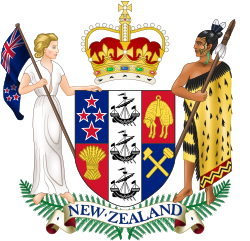| Ngan v R | |
|---|---|
 | |
| Court | Supreme Court of New Zealand |
| Decided | 14 August 2007 |
| Citation | [2007] NZSC 105; [2008] 2 NZLR 48; (2007) 23 CRNZ 754; (2007) 8 HRNZ 447 |
| Transcript | http://www.nzlii.org/cgi-bin/sinodisp/nz/cases/NZSC/2007/105.html |
| Court membership | |
| Judges sitting | Elias CJ, Blanchard, Tipping, McGrath and Anderson JJ |
Kevin Jack Ngan v The Queen is a decision of the Supreme Court of New Zealand, which was handed down on 13 December 2007. [1] The decision held that evidence of a crime discovered incidental to an inventory search of a car involved in an accident was admissible in court. The court considered the scope and application of Section 21 of the New Zealand Bill of Rights Act 1990 (BORA), regarding the right to be free of unreasonable search and seizure.